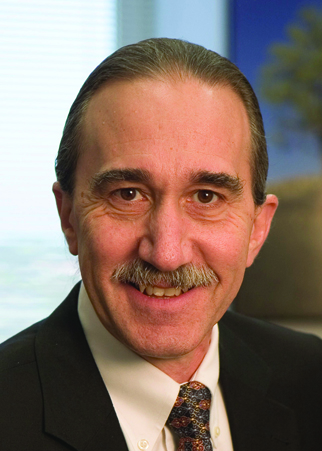The 2014 Karl Meyer Award goes to Ronald Schnaar
The Society for Glycobiology is pleased to announce that the recipient of the 2014 Karl Meyer Award is Ronald Schnaar. The Karl Meyer Award was established in 1990 to honor the distinguished career of Karl Meyer and his outstanding contributions to the field of Glycobiology. This international award is presented to well-established scientists with currently active research programs who have made widely recognized major contributions to the field of Glycobiology.
 Dr. Ronald L. Schnaar (The Johns Hopkins University School of Medicine) has been a pioneer in developing and applying chemical and biological approaches toward understanding the molecular and cellular basis for carbohydrate-based specificity in cell adhesion and recognition. Beginning with his graduate work under Y.C. Lee, Dr. Schnaar established methods for rigorously controlling one side of the interaction between cells and carbohydrate structures. By building well-characterized surfaces covalently derivatized with defined glycans, Dr. Schnaar and the colleagues that he recruited to his new laboratory at Johns Hopkins were able to probe the specificity and biochemical consequences of hepatocyte adhesion to carbohydrates, laying a foundation for appreciating that cell adhesion is a dynamic process in which initial attachment is frequently followed by subsequent biochemical and cellular responses. Dr. Ronald L. Schnaar (The Johns Hopkins University School of Medicine) has been a pioneer in developing and applying chemical and biological approaches toward understanding the molecular and cellular basis for carbohydrate-based specificity in cell adhesion and recognition. Beginning with his graduate work under Y.C. Lee, Dr. Schnaar established methods for rigorously controlling one side of the interaction between cells and carbohydrate structures. By building well-characterized surfaces covalently derivatized with defined glycans, Dr. Schnaar and the colleagues that he recruited to his new laboratory at Johns Hopkins were able to probe the specificity and biochemical consequences of hepatocyte adhesion to carbohydrates, laying a foundation for appreciating that cell adhesion is a dynamic process in which initial attachment is frequently followed by subsequent biochemical and cellular responses.
As his independent research program matured, Dr. Schnaar continued to utilize well-characterized glycan surfaces and well-characterized glycan ligands as tools to study important carbohydrate-based cellular interactions in multiple contexts, from liver to leukocytes and from brain to lung. His work has provided key insight into the diversity of selectin ligands, the functional roles of gangliosides in the vertebrate nervous system, and the importance of siglec-4 and its counter-receptors for maintaining the integrity of the neuronal-glial interface in the vertebrate brain. The Schnaar lab discovered that siglec-4 binding to specific ganglio-series glycosphingolipid glycans was inhibitory for axon outgrowth and subsequently translated this basic observation into potentially therapeutic approaches for ameliorating traumatic spinal cord injury. In the current phase of his career, Dr. Schnaar serves as the Program Director for a multi-investigator Program of Excellence in Glycoscience (PEG) grant from NIH (NHLBI). His PEG is focused on the role of siglecs in lung inflammatory diseases, bringing together his expertise in glycan recognition with the expertises of his collaborators in lung pathobiology, glycan structural analysis, sialochemistry, and sialobiology.
Dr. Schnaar has donated immense amounts of energy and attention toward enhancing graduate education and toward bettering the standing of the glycobiology community. His commitment to teaching and mentoring has been acknowledged through bestowal of the Johns Hopkins School of Medicine Graduate Student Teaching Award and through the deep appreciation of his former students and post-doctoral fellows, over 90% of whom remain in active, frontline, biomedical research endeavors. Dr. Schnaar's commitment of service to the glycobiology community has taken many forms, including President of the Society for Glycobiology and Editor-in-Chief of Glycobiology. Over Dr. Schnaar's 10 years as editor, submissions to Glycobiology increased 240% while the average time to first decision was only 30 days. Under his editorship, the journal moved from paper to electronic submission and achieved web-posting times of 7 days following acceptance. These advances kept Glycobiology in step with changes in other major scientific journals and ensured that the field has maintained a competitive presence in the biomedical community.
For his seminal contributions to the field of glycobiology, both in his basic research on glycan-mediated cellular recognition and in his essential contributions to the well-being of the research community, Ronald Schnaar represents the very best in the field and thus has been awarded the 2014 Karl Meyer award from the Society for Glycobiology.
|

 Dr. Ronald L. Schnaar (The Johns Hopkins University School of Medicine) has been a pioneer in developing and applying chemical and biological approaches toward understanding the molecular and cellular basis for carbohydrate-based specificity in cell adhesion and recognition. Beginning with his graduate work under Y.C. Lee, Dr. Schnaar established methods for rigorously controlling one side of the interaction between cells and carbohydrate structures. By building well-characterized surfaces covalently derivatized with defined glycans, Dr. Schnaar and the colleagues that he recruited to his new laboratory at Johns Hopkins were able to probe the specificity and biochemical consequences of hepatocyte adhesion to carbohydrates, laying a foundation for appreciating that cell adhesion is a dynamic process in which initial attachment is frequently followed by subsequent biochemical and cellular responses.
Dr. Ronald L. Schnaar (The Johns Hopkins University School of Medicine) has been a pioneer in developing and applying chemical and biological approaches toward understanding the molecular and cellular basis for carbohydrate-based specificity in cell adhesion and recognition. Beginning with his graduate work under Y.C. Lee, Dr. Schnaar established methods for rigorously controlling one side of the interaction between cells and carbohydrate structures. By building well-characterized surfaces covalently derivatized with defined glycans, Dr. Schnaar and the colleagues that he recruited to his new laboratory at Johns Hopkins were able to probe the specificity and biochemical consequences of hepatocyte adhesion to carbohydrates, laying a foundation for appreciating that cell adhesion is a dynamic process in which initial attachment is frequently followed by subsequent biochemical and cellular responses.